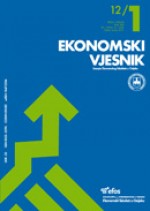Izrada modela neuronskih mreža za učestalost korištenja fakultetske knjižnice
Development of Neural Network Models for the Frequency of Use of Faculty Library
Author(s): Kata Ivić, Zvonimir Jurković, Rozalija MarinkovićSubject(s): Economy, Library and Information Science, Library operations and management, Other
Published by: Sveučilište Josipa Jurja Strossmayera u Osijeku, Ekonomski fakultet u Osijeku
Keywords: Neural networks; faculty library; classification of students; multilayered perceptron; sensitivity analysis;
Summary/Abstract: Neural network, an artificial intelligence method, is being increasingly used in today’s business as part of the decision making support systems. A key factor in the implementation of the method is the knowledge of the person using the mentioned method which will allow that person to gather adequate research data and interpret them accurately. Understanding and predictions of frequency of user visits are valuable to faculty libraries as they allow for their smooth functioning without creating waiting lists.The aim of this paper is to group students in one of two categories, i.e., according to average number of student visits to the library in the course of one day. The research included continuous and categorical variables, i.e., seven input variables and one output variable for testing of architectures. Two neural network architectures were tested using backpropagation algorithms multilayered perceptron network and the best model was selected. A sensitivity analysis was conducted based on which it was discovered that gender, a possibility to work in the library, and a possibility to use a computer have the strongest influence on the output variable. The results of modelling show that the neural network perceives well the relationship between input and output variables. The model created indicates there is possibility and need for application of artificial intelligence methods in the field of library science. The model can be used for further research in this area providing that certain improvements are made, such as introduction of additional input variables and increase of sample size. Model performance was measured by the total classification rate.
- Issue Year: 25/2012
- Issue No: 1
- Page Range: 106-116
- Page Count: 12
- Language: Croatian

